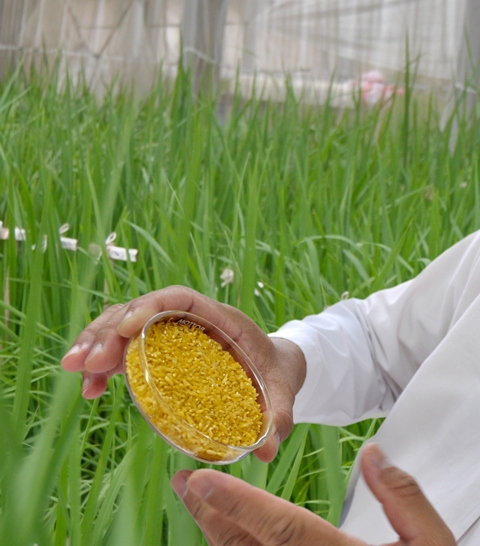 Products of modern biotechnology all went through rigorous research and assessment to ensure they are safe before they reach the consumers.
Products of modern biotechnology all went through rigorous research and assessment to ensure they are safe before they reach the consumers.
In March 2016, the Joint Department Circular No.1 series of 2016 titled Rules and Regulations for the Research and Development, Handling and Use, Transboundary Movement, Release into the Environment, and Management of Genetically-Modified Plant and Plant Products Derived from the Use of Modern Biotechnology was issued. This regulation governs the safe and responsible use of the products of modern biotechnology, which includes Golden Rice.
Five national government agencies, particularly the Departments of Agriculture, Health, Science and Technology, Environment and Natural Resources, and Interior and Local Government are involved in the implementation of the rules and regulations governing Golden Rice research.
Golden Rice is a new type of rice developed to contain beta carotene in its grain, a substance safely converted to vitamin A when needed by the body. The development of Golden Rice is prompted by the need for an additional intervention to address vitamin A deficiency (VAD). According to the Food and Nutrition Research Institute, VAD affects about 2.1 M children and a number of pregnant and nursing women in the country. These people are at risk of going blind, getting sick, and dying from common infections and diseases if left untreated.
Golden Rice stands as an important innovation to address this persistent public health problem. “Following all the regulatory processes, we remain steadfast in our efforts to develop a golden rice variety that will benefit both our farmers and consumers,” said Dr. Roel Suralta, Golden Rice project lead at PhilRice.
To ensure that Golden Rice is safe to people, a study was conducted to determine its nutritional composition. Results show that the nutrients in Golden Rice are the same with that of the ordinary rice, except for its beta carotene content as desired. Completed studies on toxicity and allergenecity also attest that Golden Rice is as safe as ordinary rice.
Along with what’s being done in the laboratory, our regulators are also working to ensure its safety. Part of the regulatory process in the conduct of the research is the environmental and health risk assessment. This is made during the conduct of the field trial. Data will be gathered and submitted to regulators for evaluation. The result is a major consideration in proceeding with the research.
Safety has and always been a priority at all stages in the development of Golden Rice. “We are strictly adhering to the rules and regulations in conducting our research,” Suralta emphasized.
Golden Rice will only be made available to farmers and consumers as a complementary solution to address VAD after passing all required tests and getting all necessary approvals from regulators.
The Golden Rice Project is still ongoing with PhilRice as lead agency and in coordination with IRRI. For more information about the project, please contact Dr. Roel R. Suralta at 0999-569-7004.




